Rank Superior General Parents Giovanni Battista Reason for exit His death Order Society of Jesus | Period in office 1597–1610 Role Priest Resting place Zhalan cemetery Name Matteo Ricci Successor Nicolo Longobardo | |
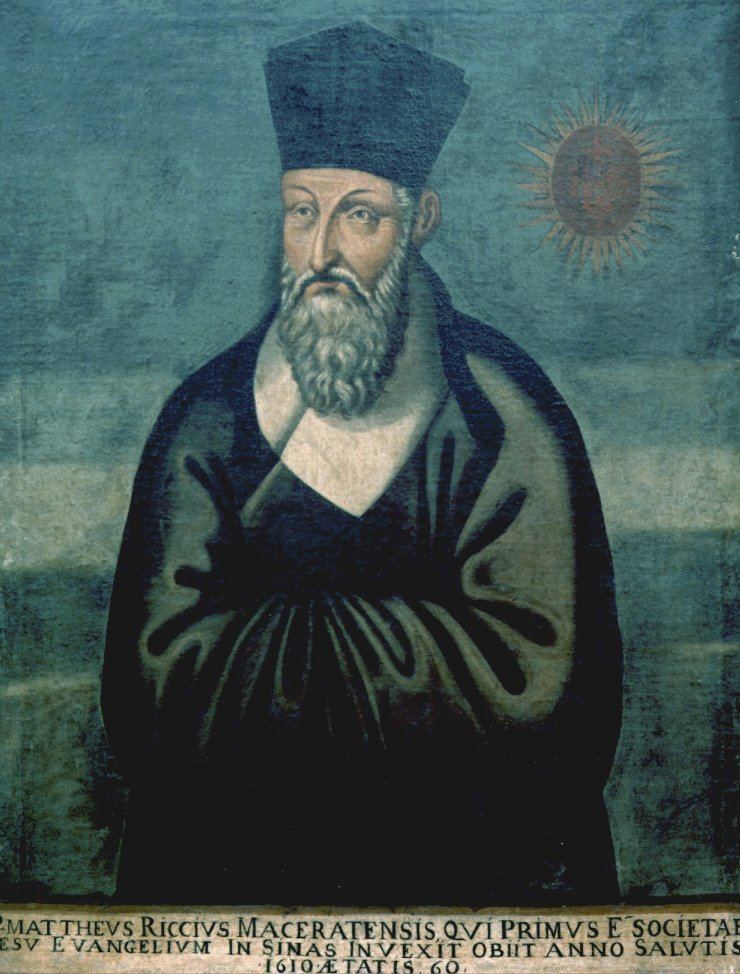 | ||
Title Superior General of the China mission Books De Christiana expeditione apud Sinas | ||
the journey of matteo ricci english chinese subtitles
Matteo Ricci, S.J. ([matˈtɛːo ˈrittʃi]; Latin: Mattheus Riccius Maceratensis; October 6, 1552 – May 11, 1610), was an Italian Jesuit priest and one of the founding figures of the Jesuit China missions. His 1602 map of the world in Chinese characters introduced the findings of European exploration to East Asia. He is considered a Servant of God in Roman Catholicism.
Contents
- the journey of matteo ricci english chinese subtitles
- Matteo ricci s chinese world map 1584 1608
- Early life
- Ricci in China
- Riccis approach to Chinese culture
- Cause of canonization
- Commemoration
- The True Meaning of the Lord of Heaven
- Works
- References
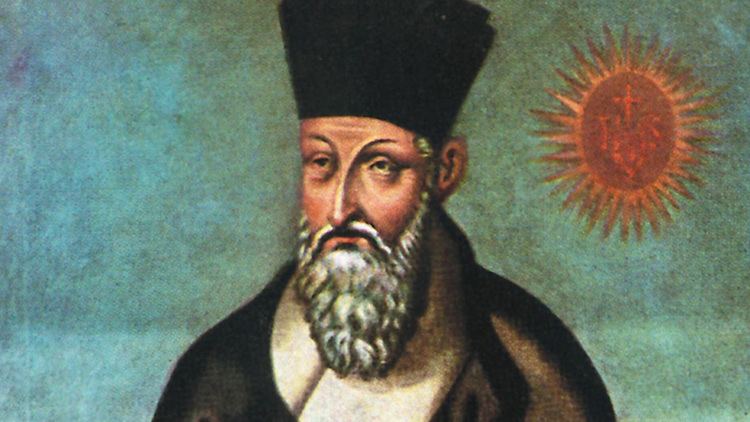
Ricci arrived at the Portuguese settlement of Macau in 1582 where he began his missionary work in China. He became the first European to enter the Forbidden City of Beijing in 1601 when invited by the Wanli Emperor, who sought his selected services in matters such as court astronomy and calendrical science. He converted several prominent Chinese officials to Catholicism, such as his colleague Xu Guangqi, who aided in translating Euclid's Elements into Chinese as well as the Confucian classics into Latin for the first time.
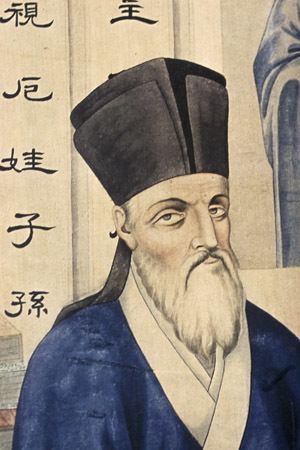
Matteo ricci s chinese world map 1584 1608
Early life
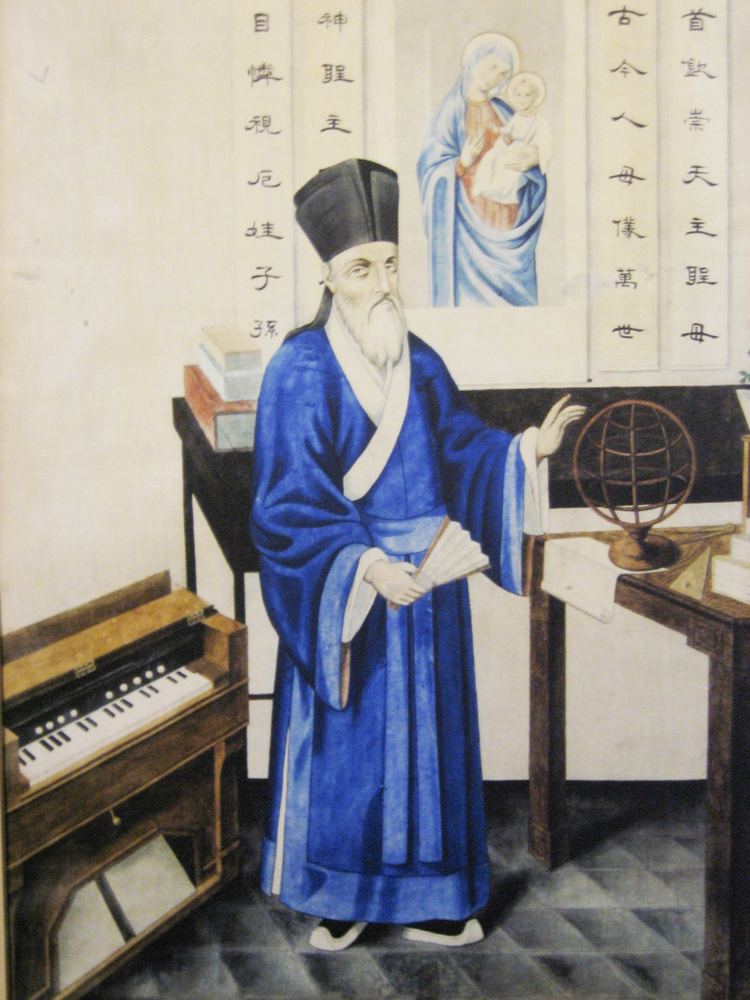
Ricci was born October 6, 1552, in Macerata, part of the Papal States, and today a city in the Italian region of Marche. He made his classical studies in his native town and studied law at Rome for two years. He entered the Society of Jesus in April 1571 at the Roman College. While there, in addition to philosophy and theology, he also studied mathematics, cosmology, and astronomy under the direction of Father Christopher Clavius. In 1577, he applied for a missionary expedition to the Far East. He sailed from Lisbon, Portugal in March 1578 and arrived in Goa, a Portuguese Colony, the following September. Ricci remained there employed in teaching and the ministry until the end of Lent, 1582, when he was summoned to Macau to prepare to enter China. Ricci arrived at Macau in the early part of August.
Ricci in China

In August 1582, Ricci arrived at Macau, a Portuguese trading post on the South China Sea. At the time, Christian missionary activity in China was almost completely limited to Macau, where some of the local Chinese people had converted to Christianity and lived in the Portuguese manner. No Christian missionary had attempted seriously to learn the Chinese language until 1579 (three years before Ricci's arrival), when Michele Ruggieri was invited from Portuguese India expressly to study Chinese, by Alessandro Valignano, founder of St. Paul Jesuit College (Macau), and to prepare for the Jesuits' mission from Macau into Mainland China.
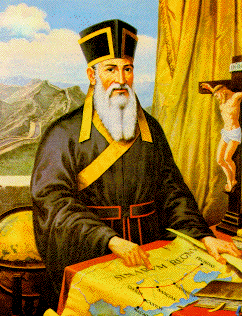
Once in Macau, Ricci studied Chinese language and customs. It was the beginning of a long project that made him one of the first Western scholars to master Chinese script and Classical Chinese. With Ruggieri, he traveled to Guangdong's major cities, Canton and Zhaoqing (then the residence of the Viceroy of Guangdong and Guangxi), seeking to establish a permanent Jesuit mission outside Macau.
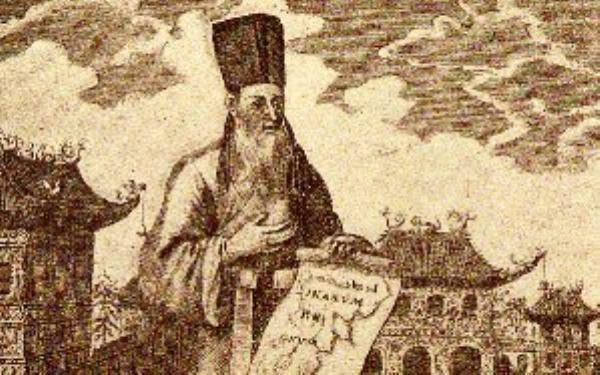
In 1583, Ricci and Ruggieri settled in Zhaoqing, at the invitation of the governor of Zhaoqing, Wang Pan, who had heard of Ricci's skill as a mathematician and cartographer. Ricci stayed in Zhaoqing from 1583 to 1589, when he was expelled by a new viceroy. It was in Zhaoqing, in 1584, that Ricci composed the first European-style map of the world in Chinese, now called the "Impossible Black Tulip" after its rarity. No prints of the 1584 map survive, but six recopied, rice-paper versions survive from 1602.
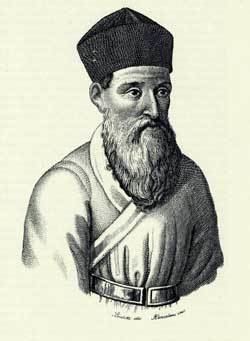
It is thought that, during their time in Zhaoqing, Ricci and Ruggieri compiled a Portuguese-Chinese dictionary, the first in any European language, for which they developed a system for transcribing Chinese words in the Latin alphabet. The manuscript was misplaced in the Jesuit Archives in Rome, rediscovered only in 1934, and published only in 2001.
There is now a memorial plaque in Zhaoqing to commemorate Ricci's six-year stay there, as well as a "Ricci Memorial Centre" in a building dating from the 1860s.

Expelled from Zhaoqing in 1589, Ricci obtained permission to relocate to Shaoguan (Shaozhou, in Ricci's account) in the north of the province, and reestablish his mission there.
Further travels saw Ricci reach Nanjing (Ming's southern capital) and Nanchang in 1595. In August 1597, Alessandro Valignano (1539–1606), his superior, appointed him Major Superior of the mission in China, with the rank and powers of a Provincial, a charge that he fulfilled until his death. He moved to Tongzhou (a port of Beijing) in 1598, and first reached the capital Beijing itself on 7 September 1598. However, because of a Korean/Japanese war at the time, Ricci could not reach the Imperial Palace. After waiting for two months, he left Beijing; first for Nanjing and then Suzhou in Southern Zhili Province.
During the winter of 1598, Ricci, with the help of his Jesuit colleague Lazzaro Cattaneo, compiled another Chinese-Portuguese dictionary, in which tones in Chinese syllables were indicated in Roman text with diacritical marks. Unlike Ricci's and Ruggieri's earlier Portuguese-Chinese dictionary, this work has not been found.
In 1601, Ricci was invited to become an adviser to the imperial court of the Wanli Emperor, the first Westerner to be invited into the Forbidden City. This honour was in recognition of Ricci's scientific abilities, chiefly his predictions of solar eclipses, which were significant events in the Chinese world. He established the Cathedral of the Immaculate Conception in Beijing, the oldest Catholic church in the city. Ricci was given free access to the Forbidden City but never met the reclusive Wanli Emperor, who, however, granted him patronage, with a generous stipend and supported Ricci's completion of the Zhifang Waiji, China's first global atlas.
Once established in Beijing, Ricci was able to meet important officials and leading members of the Beijing cultural scene and convert a number of them to Christianity. One conversion, which he called "extraordinary", occurred in 1602, when Li Yingshi, a decorated veteran of the Japanese/Korean War and a well-known astrologer and feng shui expert, became a Christian and provided the Jesuits with a wealth of information.
Ricci was also the first European to learn about the Kaifeng Jews, being contacted by a member of that community who was visiting Beijing in 1605. Ricci never visited Kaifeng, Henan Province, but he sent a junior missionary there in 1608, the first of many such missions. In fact, the elderly Chief Rabbi of the Jews was ready to cede his power to Ricci, as long as he gave up eating pork, but Ricci never accepted the position.
Ricci died on May 11, 1610, in Beijing, aged 57. By the code of the Ming Dynasty, foreigners who died in China had to be buried in Macau. Diego de Pantoja made a special plea to the court, requesting a burial plot in Beijing, in the light of Ricci's contributions to China. The Wanli Emperor granted this request and designated a Buddhist temple for the purpose. In October 1610, Ricci's remains were transferred there. The graves of Ferdinand Verbiest, Johann Adam Schall von Bell, and other missionaries are also there, and it became known as the Zhalan Cemetery. It is now part of the campus of the Beijing Administrative College.
Ricci was succeeded as Superior General of the China mission by Nicolò Longobardo in 1610. Longobardo entrusted another Jesuit, Nicolas Trigault, with expanding and editing, as well as translating into Latin, those of Ricci's papers that were found in his office after his death. This work was first published in 1615 in Augsburg as De Christiana expeditione apud Sinas and soon was translated into a number of other European languages.
Ricci's approach to Chinese culture
Ricci could speak Chinese as well as read and write classical Chinese, the literary language of scholars and officials. He was known for his appreciation of Chinese culture in general but condemned the prostitution which was widespread in Beijing at the time. During his research, he discovered that in contrast to the cultures of South Asia, Chinese culture was strongly intertwined with Confucian values and therefore decided to use existing Chinese concepts to explain Christianity. He did not explain the Catholic faith as entirely foreign or new; instead, he said that the Chinese culture and people always believed in God and that Christianity is simply the completion of their faith. He borrowed an unusual Chinese term, Tiānzhǔ (天主, "Lord of Heaven") to describe the God of Abraham, despite the term's origin in traditional Chinese worship of Heaven. (He also cited many synonyms from the Confucian Classics.) He supported Chinese traditions by agreeing with the veneration of the dead. Dominican and Franciscan missionaries felt he went too far in accommodation and convinced the Vatican to outlaw Ricci's approach. On the other hand, some contemporary authors have venerated Ricci as an exemplar of beneficial inculturation.
Like developments in India, the identification of European culture with Christianity led almost to the end of Catholic missions in China, but Christianity continued to grow in Sichuan and some other locations.
Xu Guangqi and Ricci become the first two to translate some of the Confucian classics into a western language, Latin.
Ricci also met a Korean emissary to China, Yi Sugwang. He taught Yi the basic tenets of Catholicism and gave him several books concerning the west which were incorporated into his Jibong Yuseol, the first Korean encyclopedia. Along with João Rodrigues's gifts to the ambassador Jeong Duwon in 1631, Ricci's gifts influenced the creation of Korea's Silhak movement.
Cause of canonization
The cause of his beatification, originally begun in 1984, was reopened on January 24, 2010, at the cathedral of the Italian diocese of Macerata-Tolentino-Recanati-Cingoli-Treia. Bishop Claudio Giuliodori, the apostolic administrator of the Diocese of Macerata, formally closed the diocesan phase of the sainthood process on May 10, 2013. The cause moved to the Congregation for the Causes of Saints at the Vatican in 2014.
Commemoration
The following places and institutions are named after Matteo Ricci:
In the run-up to the 400th anniversary of Ricci's death, the Vatican Museums hosted a major exhibit dedicated to his life. Additionally, Italian film director Gjon Kolndrekaj produced a 60-minute documentary about Ricci, released in 2009, titled Matteo Ricci: A Jesuit in the Dragon's Kingdom, filmed in Italy and China.
In Taipei, the Taipei Ricci Institute and the National Central Library of Taiwan opened jointly the Matteo Ricci Pacific Studies Reading Room and the Taipei-based online magazine eRenlai, directed by Jesuit Benoît Vermander, dedicated its June 2010 issue to the commemoration of the 400th anniversary of Ricci's death.
The True Meaning of the Lord of Heaven
The True Meaning of the Lord of Heaven (天主實義) is a book written by Ricci, which argues that Confucianism and Christianity are not opposed and in fact are remarkably similar in key respects. Ricci used the treatise in his missionary effort to convert Chinese literati, men who were educated in Confucianism and the Chinese classics. There was controversy over whether Ricci and other Jesuits had gone too far and changed Christian beliefs to win converts.
Peter Phan argues that True Meaning was used by a Jesuit missionary to Vietnam, Alexandre de Rhodes, in writing a catechism for Vietnamese Christians. In 1631, Girolamo Maiorica and Bernardino Reggio, both Jesuit missionaries to Vietnam, started a short-lived press in Thăng Long (present-day Hanoi) to print copies of True Meaning and other texts. The book was also influential on later Protestant missionaries to China, James Legge and Timothy Richard, and through them John Nevius, John Ross, and William Edward Soothill, all influential in establishing Protestantism in China and Korea.
